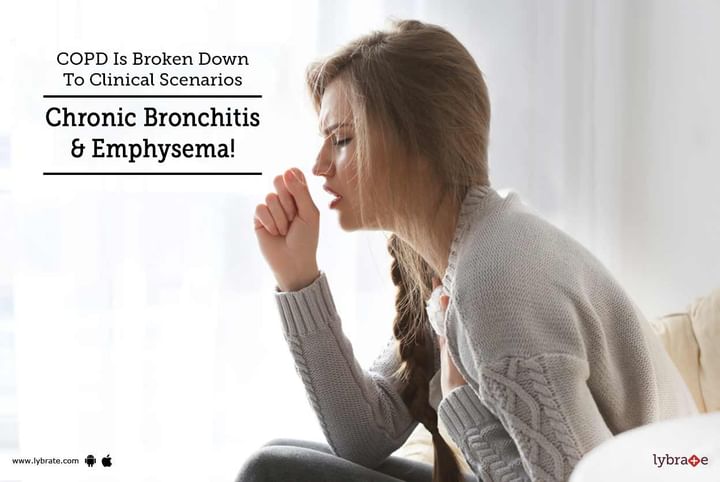COPD Is Broken Down To Clinical Scenarios - Chronic Bronchitis & Emphysema!
Chronic Bronchitis is a result of inflamed bronchioles (pipes carrying air to alveoli or balloons) that can produce mucus and lead to coughing and difficulty in breathing. When smoking causes inflammation of the bronchioles, constriction or squeezing takes place. This results in wheezing because air is travelling through narrowed tubes.
Emphysema, in short, is basically a dead lung. As smoke travels farther down your respiratory tract, the air sacs in your lungs (alveoli), start popping out or dying. Your bank of alveoli gets depleted over time as you continue your habits. You will notice as you increase your heart rate whether its by running or walking a flight of stairs this activity requires your red blood cells to move faster through the alveoli and have less time to receive oxygen from the lung. This leads to having less oxygen on red blood cells whose job is to deliver oxygen to the rest of the body.
Symptoms
In COPD, Both the airways(pipes) and lung parenchyma are affected by the disease and airflow limitation is progressive. COPD has been predominantly seen in patients above 40-yearold and frequent smokers.
The symptoms indicative of COPD are as follows:
- Chronic cough - Also referred to as smoker's cough, the cough is relentless and does not subside with regular cough treatment. This is one of the first indications of COPD.
- Mucus buildup - There is constant built up of mucus which gets expelled during coughing. The person never feels completely clear of mucus, and the regular cough expectorants do not help relieve the symptoms.
- Fatigue associated with limited activity - As noted earlier, the reduced capacity of the organs limits their activities. Therefore, regular activities like walking short distances or climbing stairs can induce fatigue.
- Shortness of breath - The above fatigue is associated with shortness of breath, even with small physical exertion. A person with COPD will see marked tiredness and reduced ability to perform routine chores and feel a tightness in the chest.
- Wheezing - Passage of air through the obstructed air tubes produces a whistling sound or wheezing. It is more pronounced when there is mucus accumulation in the airways.
Rarely, Frequent respiratory infections, more frequent flu attacks, swelling of the feet and ankles, cardiovascular disease, weight loss, and morning headaches.
Treatment
While there is no cure for COPD, once it sets, the following are some ways to slow its progression and reduce severity of the symptoms:
- Bronchodilators - Dilate the air tubes and ease flow of air
- Corticosteroids - Help reduce inflammation and thereby improve airflow through the tubes
- Flu vaccination - Helps curb the frequent flu attacks
- Antibiotics - To contain infections
- Pulmonary rehabilitation - A combination of breathing exercise and patient education to improve lung function.
- Oxygen therapy - In very severe cases, oxygen may be required.
- Lifestyle changes - Eating healthy foods, preventing exposure to dust and smoke, quitting smoking, breathing exercises, bi-annual medical check-ups to monitor lung functions are essential.
Knowing that you have COPD is the first step towards managing COPD, which can be managed effectively.



+1.svg)
